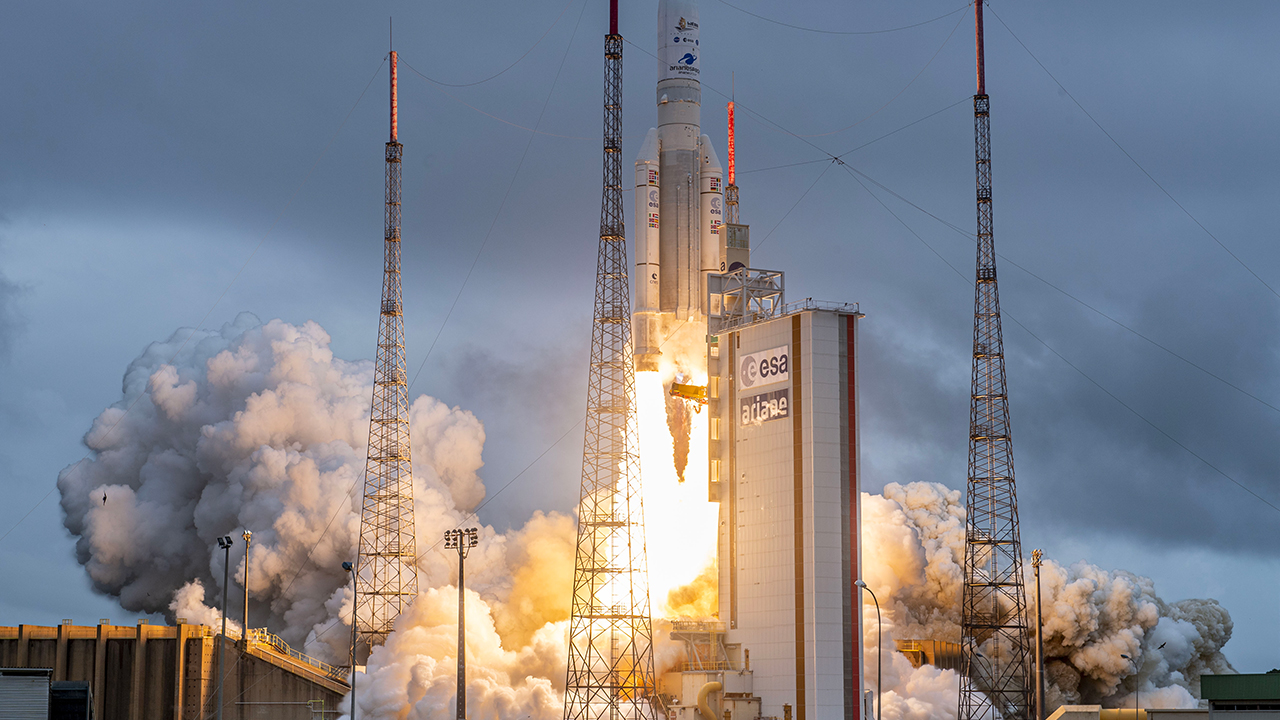Ariane 5: A unique launcher for iconic missions – JWST
22.08.2023

Ariane 5: a career spanning 27 years and 111 successful launches. Ariane 5 lifted off for the last time on July 4. We continue our series highlighting some of the rocket’s most significant missions.
27 minutes, an extraordinary mission. On Saturday December 25, 2021 at 9.20am local time, an Ariane 5 rocket blasted off from Europe’s spaceport in Kourou, French Guiana, on a mission for the American (NASA), European (ESA) and Canadian (CSA) space agencies, to inject the James Webb Space Telescope (JWST) into its transfer orbit. The telescope separated from the launcher 27 minutes after lift-off.
A high-precision launch on an extremely reliable launcher gave it the best possible start in life, enabling this telescope – carrying the hopes of so many – to open a new chapter in astronomy.
After a 29-day journey, this most powerful space telescope ever built arrived at its orbit around the Lagrange 2 point, about one and a half million kilometers from Earth, to start its mission to observe galaxies, planets, stars, and nebulae to help unveil the secrets of the universe.
Seeing further
Successor to the Hubble Space Telescope, JWST is 100 times more powerful. It incorporates improved, different technologies to capture 70% more light. Because of these innovations, astronomers will be able to make unprecedented observations that show the first stars and galaxies to be formed after the Big Bang?
JWST will reveal the hidden Universe: stars shrouded in clouds of dust, molecules in the atmospheres of other worlds, and light from the first stars and galaxies. With its suite of state-of-the-art instruments, Webb will push the frontiers of our knowledge of the solar system, of how stars and planets form, and of galaxy formation and evolution, in new ways.
Perfect compatibility between rocket and rider
ArianeGroup rigorously prepared, adapted and requalified Ariane 5 for this exception job of getting JWST off on its mission in complete security. In doing so, the teams faced three particularly tricky issues: fairing volume, pressure management, and thermal constraints.
The engineers developed specific solutions for this mission to ensure the perfect compatibility between Ariane 5 and its passenger.
A special adapter for the spacecraft was designed and built in compliance with the available space under the fairing: the telescope measures 10.5 meters high by nearly 4.5 meters wide when folded up under the fairing, versus 21 x 14 meters when fully deployed.
Pistons were placed near the purge vents in the fairing to force their opening and reduce as much as possible any pressure differential between the inside of the fairing where the telescope was located and the vacuum of space outside.
To protect the telescope’s fragile components from any undesirable thermal effects, the flight software was set up so that Ariane 5 performed a specific roll maneuver to control its exposure to the Sun once the fairing was jettisoned.
Greater precision means less fuel consumed and a longer operational life
Ariane 5’s perfect launch placed the telescope on a trajectory and at a speed that were ideal for transfer orbit to its target destination 1.5 million kilometers from Earth.
Thanks to the skill of the ArianeGroup and Arianespace engineers, the propellant saved in this way has increased the telescope’s working life by at least 10 years.
Ariane 5 once again proved its exceptional reliability, for the invaluable benefit of research and space exploration.